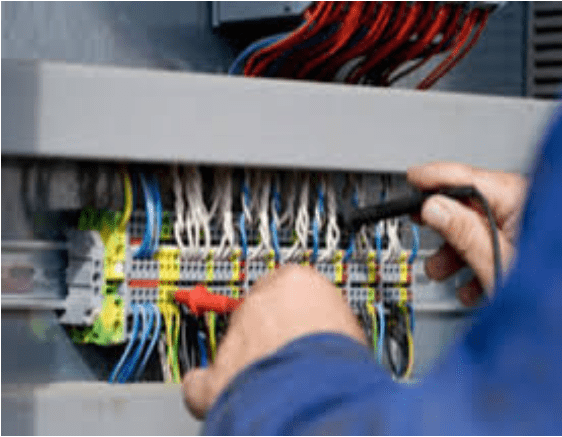
Table of Contents
ToggleIntroduction
Today, electrician enjoy excellent job prospects due to an acute shortage of skilled workers who take care of installing and maintaining all of the electrical appliances and equipment that make our lives and jobs more comfortable and easier. Smart technology has increased demand for electricians trained in installing and maintaining these complex and integrated systems. The latest generation of home devices includes everything from keyless door locks opened with fingerprint scanners, to internet-connected light bulbs that turn on and off by voice command – all controlled remotely by smartphone or computer. As this equipment becomes more affordable, the demand for skilled installers is expected to increase as well.
High Demand for Electricians
The U.S. Bureau of Labor Statistics (BLS) projects a 5% growth in electrician jobs from 2022 to 2032, faster than the average for all occupations.
Retiring electricians are creating more job openings. Many older electricians are retiring, while new construction and infrastructure upgrades are increasing.
Renewable energy (solar/wind), smart homes, and EV charging stations are increasing demand for skilled electricians.
The U.S. push toward renewable energy (like solar and wind) is creating jobs for solar panel installers and electricians trained in clean energy systems.
Smart home systems, energy-efficient lighting, security systems, and network cabling all require skilled electricians. New tech increases the complexity of installations, making trained professionals even more necessary.
According to the National Electrical Contractors Association (NECA), 40% of electricians will retire in the next decade, creating massive demand for new workers.
New housing, commercial buildings, and infrastructure projects all require electrical systems.
Great Annual Income from Electrical Job work
The median annual wage for electricians was $60,240. Experienced electricians (especially in unions or industrial settings) can earn $80,000–$100,000+ per year.
Many electricians get overtime pay, bonuses, health insurance, and retirement plans. Opportunities for overtime and contract work can significantly increase earnings.
Becoming a master electrician or contractor unlocks higher-paying jobs. Running your own electrical company can lead to 6-figure earnings.
Career Advancement Opportunities
After gaining experience, electricians can become Master Electricians, allowing them to supervise projects, run their own business, or work on complex systems.
Can move into roles like electrical inspector, project manager, business owner, or specialist (e.g., solar or industrial electrician).
Electricians can focus on industrial systems, renewable energy (solar/wind), home automation, or EV charging stations for higher pay.
Advancement to foreman, project manager, or electrical inspector positions. Many start their own contracting business after licensure. Some move into training or union leadership roles.
Job Security (Can’t replaced by Robots)
Electricians are always needed—homes, businesses, factories, and infrastructure require electrical work. Even during economic downturns, maintenance and emergency repairs keep demand steady
Unlike some jobs at risk of automation, electricians do hands-on work that can’t easily be replaced by robots. EV charging stations, solar/wind power, and smart home tech require skilled electricians.
Government investments in infrastructure and clean energy are also expected to create thousands of new jobs for electricians nationwide. Moreover, electricians who join unions often receive additional job protection, health benefits, and retirement plans, further enhancing their career stability.
The rise of green energy technologies, such as solar panel installations and electric vehicle (EV) charging stations, is boosting demand for electricians trained in modern systems. The transition to renewable energy and smart home technologies means more specialized electrical work will be required for years to come.

Pingback: Electrician jobs in USA - Electricalsphere